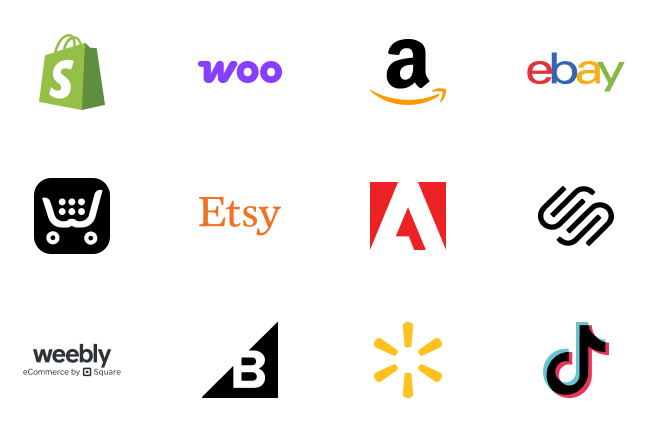As the COVID-19 pandemic continues to disrupt many aspects of life around the world, in the logistics industry, attention has been keenly focused on the impact to the supply chain.
During the pandemic, manufacturers, wholesalers, retailers, shipping companies, and consumers have experienced many shipping delays in supplies and package delivery due to coronavirus supply chain disruptions. This has left businesses with no option but to find creative and innovative ways to pivot their operations in order to keep their businesses afloat.
In this article, we'll break down the coronavirus impact on supply chain operations and fulfillment, share five ways COVID-19 is spurring fulfillment innovation and how large retailers like Amazon are dealing with coronavirus supply chain challenges.
4 Challenges the Coronavirus has Brought for Operations and Fulfillment
The coronavirus impact on the supply chain, business operations, and order fulfillment has been immense. This has posed challenges to customers, retailers, suppliers, manufacturers, and courier companies.
Here are some of the difficulties supply chain and logistics companies, business owners, and customers have had to grapple with during the COVID-19 pandemic.
- Increase in orders: The coronavirus has caused many brick and mortar retailers to shut their doors due to government lock down regulations, leaving large segments of the population confined to their homes. They have resorted to online shopping for essential goods, medical supplies, and groceries. Even those who had never thought of online shopping or didn’t know how to do it, this pandemic has forced them to figure it out.
- Shipping delays: An increase in online shopping has led to a rise in package volumes that carriers have to deliver within a short time. Due to this coronavirus supply chain disruption, many eCommerce retailers have been unable to replenish their inventory, leading to shipping delays in every step of the fulfillment process.
- Staffing Challenges: Staffing challenges have contributed to the coronavirus impact on the supply chain. Many businesses have had to grapple with labor shortages during the pandemic. Lockdowns, curfews, and quarantines have made it difficult for employees to access their places of work. In the wake of the virus, companies like Amazon, Walmart, and most grocery stores have had to hire more workers to help deal with the coronavirus impact on the supply chain.
- Government Regulations: Government measures, including lockdowns, curfews, and social distancing, have had a significant impact on the consumer economy. These measures have restricted business activities in most cities around the world. Cross-border and in-city transportation and delivery of goods and services have been stalled. Of late, governments are easing out such measures and have begun to allow considerable levels of movement.
>
5 Ways the Coronavirus is Spurring Fulfillment Innovation
The major disruptions caused by the COVID-19 pandemic have forced logistics companies to find creative solutions and innovate in order to sustain their businesses.
Many grocers and retailers have come up with new ways to roll back the coronavirus impact on the supply chain, streamline their customers' shopping experience, and keep their businesses operating smoothly.
While some of the measures put in place to combat the virus may fade away, some of the innovations sparked by the covid-19 situation have brought fulfillment convenience that will be with us for long.
Here are five of the coronavirus pandemic innovations.
1.Contactless payment and delivery
This one of the measures businesses are implementing to deal with the coronavirus impact on the supply chain. Retailers and grocers have come up with new contactless approaches to shop, check out, and deliver their customer's orders.
Walmart has introduced a new feature in its smartphone app. Instead of customers touching a screen at the cash register, this feature allows them to scan a QR code. Apps like Google Pay and Apple Pay have not been left behind. They have features that enable customers to skip the credit card reader.
Some retailers have waived the need for a signature during home delivery or when people pick up their items. Retailers are also implementing prepackaged goods so that customers can skip the deli counter and reduce movement in other parts of the store. Such grab-and-go prepackaged items are helping to shorten customers' time in stores.
2. Virtual Reality connects customers to stores
Workers and customers find it challenging to access warehouses and shopping malls during the COVID-19 pandemic. Customers are using VR technology to view items in stores. Ikea Place app is one example that is revolutionizing shoppers' experience during these unprecedented times. DHL employees use AR and VR to make faster, error-free order picking with smart glasses.
Companies like Amazon and other large retailers have resorted to Virtual Reality to get a real-time view of their different warehouses spread across different locations and countries that are hard to access physically during this pandemic period.
3. Robotic fulfillment strategy
Most retailers and grocers have experienced out-of-stock situations and delays in fulfillment. They have teamed up with robotics companies in recent months to speed up order picking. This has stepped up investments in automation to streamline their pick, pack, and ship operations amid order spikes.
To help speed up and reduce the cost of fulfilling online orders, some grocers have decided to turn unused space in the back of their grocery stores into small-scale, automated distribution centers, an innovative technique called micro-fulfillment.
Fabric, a company that sells automated systems, has seen more grocers expressing interest in the system during the pandemic and is building more centers for undisclosed grocery brands. Companies like Walmart, Albertsons, and Amazon are leading the park in establishing these micro fulfillment centers to combat fulfillment bottlenecks induced by the coronavirus impact on the supply chain.
4. Rethinking the supply chain
Many eCommerce retailers are rethinking their supply chain after being unable to replenish their inventory from China due to the coronavirus impact. They have learned that relying on a single country or region for manufacturing can result in multiple shipping delays, cause significant shortfalls and potential business peril.
While sourcing goods from one manufacturer or country can be super cheap and help keep costs low, it presents risky disruptions in revenues when large-scale delays hit. Retailers are already reconsidering their supply chains, with more bookings from Southeast Asia to compensate for China's shortfall.
When Amazon suspended Amazon FBA for non-essential categories, many retailers that relied on Amazon for sales and order fulfillment were forced to rethink new markets and look for new channels to sell and ship their goods. This included forming partnerships with multiple third-party logistics (3PL) providers and splitting inventory so that supply is not entirely stalled by the current or future pandemics.
5. Local sourcing of supplies
Consumer behavior has shifted from using imported goods to purchasing locally produced items. People feel that imported products must have come into contact with so many individuals and contaminated surfaces. They trust goods produced locally to be less risky and to have fewer chances of contamination. Medical supplies, test kits, sanitizers, and masks are in high demand in every country, forcing businesses to come up with innovative ways to produce these items locally.
The coronavirus impact on the supply chain has also occasioned shipping delays, forcing companies to look for ways to get supplies locally. This has led to an increase in local sourcing of raw materials and the manufacturing of goods.
How Amazon is Confronting the Challenges of the Pandemic
Amazon has put several measures in place to help deal with the coronavirus impact on the supply chain. These measures are meant to support employees, customers, and the community.
Here are some steps that Amazon has taken to pivot through the covid-19 situation.
- Hiring more workers: Amazon has hired 175,000 extra full-time and part-time employees to help deal with the coronavirus supply chain shipping delays.
- Relief fund: Amazon has established a $25 million relief fund for their seasonal workers and delivery drivers in quarantine or facing financial hardships.
- Contactless delivery: Amazon has implemented front-porch delivery for scheduled deliveries, and unattended delivery for customers ordering from Whole Foods Market, Prime Now, and Amazon Fresh. Items are left at the customers' front door without the need to sign.
- To help accelerate Covid-19 research, Amazon has launched a $20 million AWS Diagnostic Initiative.
- Free masks: Amazon provides free masks to customers at all Amazon physical retail stores and Whole Foods Market locations, and has enhanced cleaning and spraying on the same.
- Automation: Amazon is actively looking at ways to automate grocery fulfillment to help navigate the coronavirus impact on the supply chain during the covid-19 pandemic.
Getting Creative in a Challenging Environment
The coronavirus impact on the supply chain has exposed vulnerabilities in business operations and order fulfillment. Businesses are now moving with speed to implement what we at Easyship have come to refer to as coronavirus pandemic innovations to pivot their services through the coronavirus supply chain challenges.
Contactless payment and delivery, rethinking the supply chain, local sourcing, robotic fulfillment, and virtual reality are some of the streaming innovations during the coronavirus pandemic retailers are implementing to navigate the coronavirus impact on the supply chain.
You can find more information about how the COVID19 pandemic is impacting shipping and eCommerce on our blog, and in our COVID19 guide.















































.svg)
.svg)






.avif)
.avif)

.avif)
.avif)


.avif)


.avif)










.avif)
.avif)



.avif)
.avif)


.avif)
.avif)


.avif)



.webp)







.svg)





.webp)